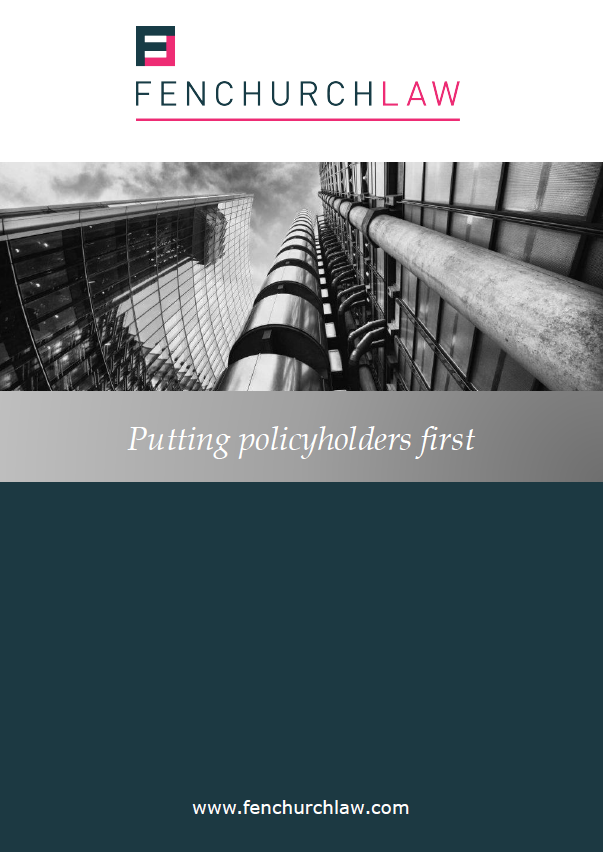
Business Interruption Claims – Improving Outcomes for Policyholders
Insurers are set to pay out a record $135 billion to cover losses from natural catastrophes in 2017, driven by the costliest hurricane season ever in the United States and widespread flooding in South Asia. Extreme weather events such as recent mudslides and wildfires, as well as industrial disasters and acts of terrorism, often cause damage affecting many businesses, bringing into focus the issue of policy response for BI claims involving wide area damage.
Policy Wordings
Standard UK policy wordings provide BI cover for interference to revenues caused by loss or damage to the insured’s property (the “Incident”). The link to physical damage is maintained for purposes of the “Other Circumstances” clause, which provides that adjustments shall be made as appropriate to reflect trends in turnover affecting the business at the relevant time, so the level of indemnity represents so far as reasonably practicable the loss of profits that would have been achieved but for the Incident. This does not encompass interruption consequent upon damage within the surrounding area and is not synonymous with operation of the insured peril itself, which can give rise to anomalous results and severely limit policyholders’ recoveries.
Windfall Profits
In the aftermath of a catastrophic event causing wide area damage not all businesses will be affected in the same way. Despite a general downturn in the local economy, some businesses will experience increased demand (provided they are able to continue trading), for example builder’s merchants supplying materials for reconstruction or those catering for an influx of claims handlers, while similar operations shut down by the damage sustained may be deprived of the opportunity to enjoy such “windfall profits”. There is some reluctance by certain parts of the insurance market to agree to cover lost windfall profits, but in principle the Other Circumstances clause works both ways and policyholders should be able to invoke an upward trend in appropriate cases, subject to adequacy of the overall sum insured.
UK Legal Position
The issue of whether the Other Circumstances clause can or should be used to adjust the standard turnover to reflect trends resulting from an event causing damage not only to the insured’s property, but also to the wider geographical area, was considered by the English courts in Orient-Express Hotels v Generali [2010]. Prior to this some disputes over holiday resorts in the Far East, subject to UK policy wordings, had gone to arbitration and been variously decided both in favour of and against the respective insureds.
The Orient-Express case considered the impact of Hurricane Katrina on a luxury hotel in New Orleans, and the owner’s appeal on points of law following arbitration. In summary, the hotel suffered significant physical damage from wind and water resulting in its closure throughout September and October 2005, and partially reopened in November, albeit with limited amenities and ongoing repairs. A state of emergency had been declared and mandatory evacuation of the city ordered on 28 August, and lifted at the end of September. Insurers rejected the owner’s claim for BI losses during closure of the hotel by applying the trends clause, arguing that New Orleans was effectively closed throughout this period and the adjusted standard turnover should be zero.
The owner argued that: it was entitled to indemnity for losses caused by insured damage even if concurrently caused by damage in the vicinity (The Miss Jay Jay [1987]); a reasonable interpretation should not permit adjustment of the consequences of the same insured peril which caused the insured damage; the trends clause was effectively being treated as an exclusion, which it was not; the precise reasons for cancellations and reduced revenue were likely to be a combination of factors, which could not sensibly be separated from each other evidentially; and insurers’ position had the remarkable result that the more widespread the impact of a natural peril, the less cover is afforded by the BI policy for the consequences of damage to insured property.
The Commercial Court disagreed with these submissions, upholding the tribunal’s conclusion that a “but for” causation test was appropriate in accordance with the policy wording, so that the BI loss was to be assessed on the hypothesis that the hotel was undamaged but the city was devastated, as in fact it was. Permission to appeal was granted, however, and it was subsequently rumoured in academic circles the Court of Appeal might have taken a different view, had the case not settled by then.
US Approach
BI forms in the US generally refer to “Direct physical loss of or damage to property, including personal property in the open or within 100 feet, at premises described in the Declarations and for which a Business Income Limit of Insurance is shown in the Declarations. The loss or damage must be caused by or result from a Covered Cause of Loss”. The link to physical damage for claims involving wide area loss is not as strong as the standard UK wording.
Many US policies include a loss determination provision specifically excluding windfall profits caused by the impact of the insured peril. Nevertheless it is interesting to note the decision in Berkshire-Cohen LLC v Landmark Aon Insurance (2009), in which the claimant realty agents were successful in recovering windfall profits due to increased demand for rental properties following Hurricane Katrina, despite the exclusion clause. The reasoning was that both storm and flood damage had occurred with only the former being a covered cause of loss, and in the US (as in most of mainland Europe) flood is a contingency addressed by the government rather than by insurance. The US District Court therefore held that, whilst the exclusion applied to storm damage under which the property damage claim was presented, it did not apply to an upward trend based on flood damage.
Practical Difficulties
The UK legal position reflected in Orient-Express has been criticised as unsatisfactory for both insurers and policyholders in applying a downward trend or “windfall loss” under the Other Circumstances clause in response to wide area damage during the period when the insureds themselves were affected by their own property damage. Most policyholders expect their loss to be measured in relation to the impact of the event that caused both damage at their premises and more widely, and consider arguments otherwise to be unjust and artificial.
Furthermore, this is in contrast to the approach adopted by the UK market following previous incidents including the City of London bombing in 1992, and severe Cumbrian flooding in 2009. In Cockermouth all businesses on Main Street were submerged to a depth of six feet or more and reconstruction works continued for around six months. A strict application of Orient-Express would have resulted in limited if any BI cover for individual insureds, who would have suffered a severe downturn irrespective of their own damage. Although the reduction might be offset in some cases by windfall profits and “non-damage” denial of access/loss of attraction extensions, subject to inner policy limits, such an outcome seems paradoxical at best and would have been reputationally damaging for insurers.
Potential Solutions
As firms become more exposed to major disasters and subsequent business interruptions as a result of increasingly complex global networks, improvements are required to ensure optimal coverage and effective risk management. It seems that insurers always intended to pay for losses that insureds would have suffered based on their own damage and challenges remain for the market to develop suitable wordings fully consistent with this approach, avoiding punitive application of the “but for” test in wide area damage scenarios that does not reflect well on the industry.
Amy Lacey is a Partner at Fenchurch Law
Other news
Singapore’s factory output boom: Is your Business Interruption cover keeping up?
10 December 2025
In the News… is a new blog series from Fenchurch Law that translates today’s headlines into practical insights for…



